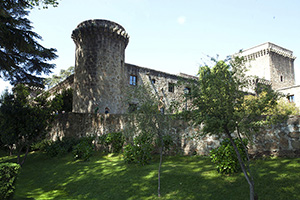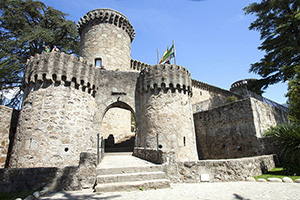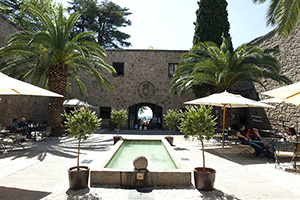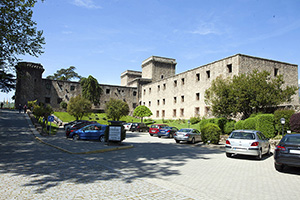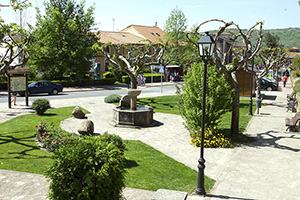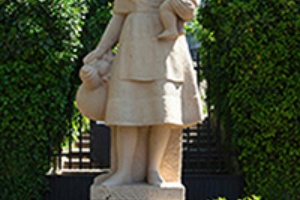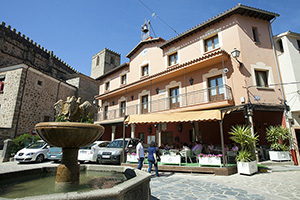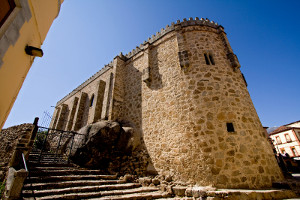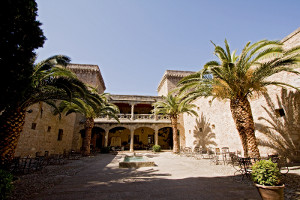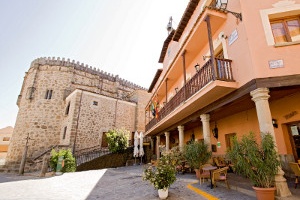Destinations
Jarandilla de La Vera
Starting point for the Emperor Carlos V Route
- Explore
- Jarandilla de La Vera
The official capital of La Vera
Location and Contact:
- Contact person: Ayuntamiento de Jarandilla de la Vera
- Tel.:+34 619 80 41 13
- Email: turismojarandilla@hotmail.com
- Website address: www.jarandilladelavera.es/
- Facebook: https://www.facebook.com/AYUNTAMIENTO-JARANDILLA-DE-LA-VERA-264940613533800/
-
Starting point for the Emperor Carlos V Route
This town deserves a special mention as His Majesty Emperor Carlos V stayed in Jarandilla -in the Castle of the Counts of Oropesa (now the Parador)- while work was being completed on the House-Palace abutting the Yuste Monastery.
La Vera's crossroads of civilisations and tourism and cultural centre. Its mild climate, beautiful landscape, leafy oak and chestnut forests, and scrubland of thyme, heather and rock roses conjure up a distinctive fresh scent. Water is an important part of the landscape, with Jarandilla having two gorges - the Jaranda and Jarandilleja- which are crossed by numerous bridges, some of which are Roman and Mediaeval.
Its origins stretch back into prehistory, with many ancient sites, such as the Capichuelas cave, anthropomorphic sepulchres and gravestones.
It also has many historic buildings, including:
- The San Agustín church, built on an elongated rectangular floorplan, with an outstanding sacristy on the Epistle side and the transept. There are two side chapels coming off the arms of the transept. The interior consists of a nave covered by a barrel vault divided into four stretches with small windows. There is a large choir opening off the nave with a diminished arch covered by a barrel vault. Underneath the presbytery there is a crypt and sacristry, which you can access through a lintelled door, covered by groin vaults.
- The Nuestra Señora de la Torre fortress church is a large and sumptuous building, built directly on the living rock, which supports, strengthens and fortifies it. The original building dates from the 12-13th centuries, but it was rebuilt during the 14-15th centuries. One of its highlights is the 16th century Renaissance chapel by the local artist Gaspar de Loaysa. The chapel ceiling features a web of four-part tracery, where we can see an arm holding a dagger. The main chapel has a pentagonal layout and is covered in a marvellous four-part ribbed vault resting on eight ledges featuring primitive human figures, suggesting Aztec origins. The main altarpiece is Renaissance with Baroque influence. · The Nuestra Señora del Sopetrán chapel, with the nave covered by a barrel vault with windows. The main niche contains an image of Nuestra Señora del Sopetrán, carved in 18th century Baroque style. There are also some ancient ceramic mosaics from Talavera.
- The 16th century Santo Cristo del Humilladero chapel, based on a rectangular layout with the apse and sacristry in the chancel, built from masonry and stone. This contains a 16th century image of the Christ of Charity, and 18th century images of the Nazarene and Christ tied to a column, with a 17th century image of the Virgin of Rosario holding the child in Talavera de la Reina tiles.
- The Castle of the Counts of Oropesa, begun by Fernando Álvarez de Toledo in the mid-15th century. This is an enormous rectangular building reinforced with cylindrical towers at the corners. The entrance is a drawbridge flanked by two towers opening onto a large parade ground with two imposing towers in the northern part. The patio is very beautiful, with its southern side opening into a spacious two-storey Gothic gallery, with diminished arches on the first level and Tuscan arches on the second, separated by a delicate parapet. Around the patio there are nine coats of arms belonging to the Figueroa family and the House of Oropesa.
- Picota de la Villa was initially a display of power by the feudal lords over the local towns and subsequently a symbol of status as a royal borough and the independence of their populations. Subsequently it was used for carrying out executions.
- Roman bridge, with Roman form (although actually Mediaeval), built using blocks from a nearby Roman mausoleum.
-
Type:
- Locality
Theme:
- Destinations
Target audience:
- Families
- Young people
- Single people
- Senior citizens
- Children
- Couples
- Single people
Gallery:
More suggestions
-

History and Art Museum of the Monastery of Yuste
The Monastery of Yuste was built in the 15th century, has been declared a National and European Heritage Site and houses a history museum.
-
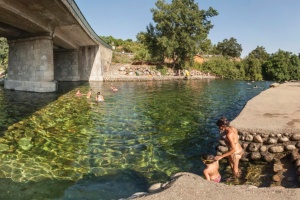
Garganta Jaranda gorge
Garganta de Jaranda gorge, in the municipality of Jarandilla de la Vera, Cáceres province, has numerous natural swimming pools where you can cool down on hot summer days.
-
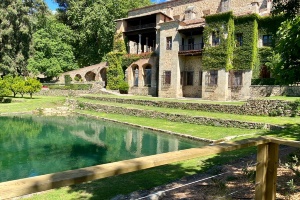
Royal Monastery of Yuste
The fact that Emperor Charles V wanted to live out his final days in this Monastery, has made it famous beyond Spain's borders.
-
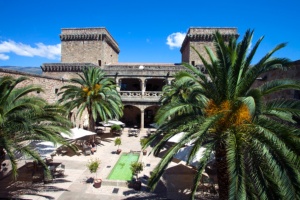
Castle-palace of the Counts of Oropesa
This 15th-century fortress retains the original Gothic beauty contemplated by Charles V during his stay in Jarandilla de la Vera.
-
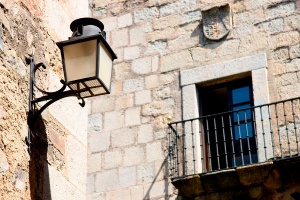
Collado de la Vera
-

Guijo de Santa Bárbara
-

Losar de la Vera
-

Robledillo de la Vera
-

Cuacos de Yuste
Huddled in the famous La Vera region of Cáceres province, you will be enchanted by Cuacos de Yuste's exuberant landscape and rich cultural heritage.
-

Aldeanueva de la Vera


